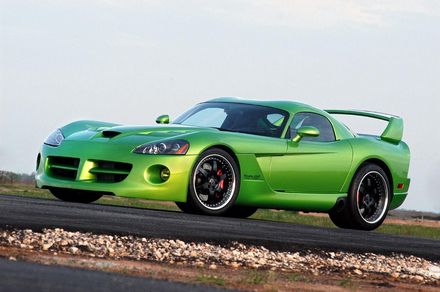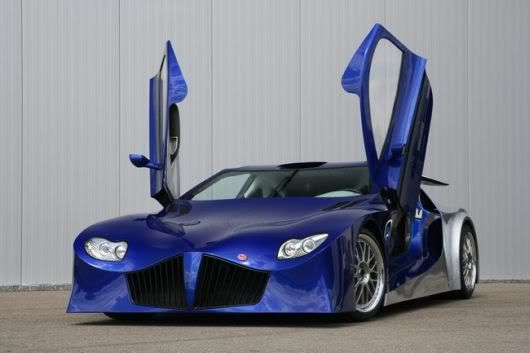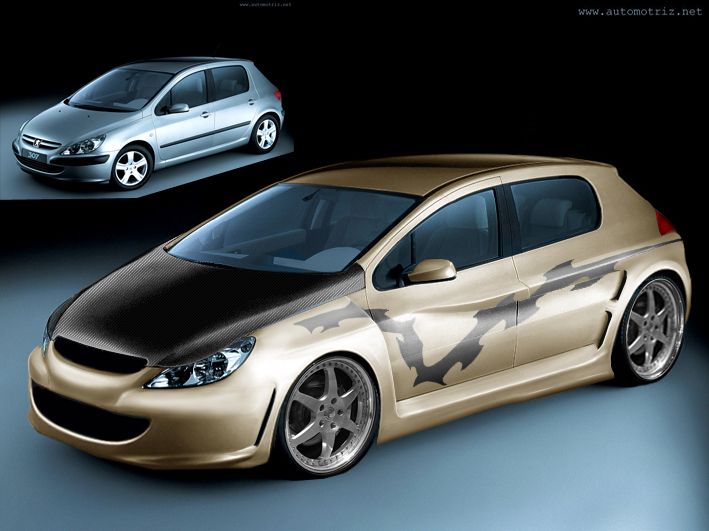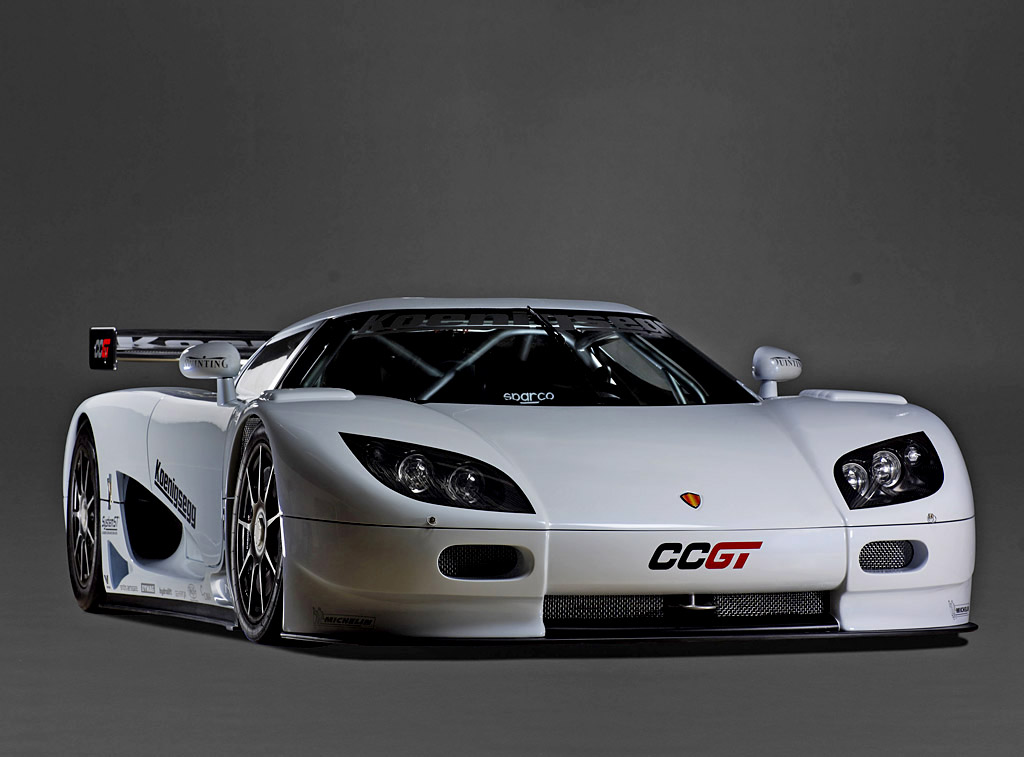Saturday, January 22, 2011
Supercar Mercedes SLS AMG

The company Mercedes-Benz announced a production of the new supercar Mercedes SLS AMG factory in Zindenfilgene. The chassis and aluminum body shell for the model of supply GRAETZ Austrian company Magna Steyr, and the engines will be assembled manually by specialists in the Bureau AMG Affalterbahe.





Labels:
Supercar Mercedes SLS AMG
Friday, January 21, 2011
Peugeot 307
 The Peugeot 307 is a small family car produced by the French Peugeot manufacturer since 2001. It was awarded the European Car of the Year title for 2002, and continues to be offered in China and certain South American markets through 2009 despite the French launch of the 308 (its intended successor) in September 2007.
The Peugeot 307 is a small family car produced by the French Peugeot manufacturer since 2001. It was awarded the European Car of the Year title for 2002, and continues to be offered in China and certain South American markets through 2009 despite the French launch of the 308 (its intended successor) in September 2007. The 307s makes use of a reworked 306 platform, that can also be found on the Citroën Xsara as well as the 1991 Citroën ZX. However, the car is larger than the 306 in every direction. The 307 continued the company's styling first seen on the Peugeot 206 and Peugeot 607. With upswept front lights and a steeply rising bonnet leading to a highly sloped windscreen (and the upright rear doors first seen on the 206), the 307 departed from the Pininfarina-designed themes employed on the previous two generations of Peugeots, as introduced with the Peugeot 205, and ending with the (evolutionary) Peugeot 406. Its height is 1,510 mm (59.4 in), which is in the middle of the spectrum between small family cars (between 1400 and 1450 mm) and compact MPVs (between 1600 and 1650 mm). Some consider the 307 as a low compact MPV rather than a tall small family car, because of its height and profile.
The 307s makes use of a reworked 306 platform, that can also be found on the Citroën Xsara as well as the 1991 Citroën ZX. However, the car is larger than the 306 in every direction. The 307 continued the company's styling first seen on the Peugeot 206 and Peugeot 607. With upswept front lights and a steeply rising bonnet leading to a highly sloped windscreen (and the upright rear doors first seen on the 206), the 307 departed from the Pininfarina-designed themes employed on the previous two generations of Peugeots, as introduced with the Peugeot 205, and ending with the (evolutionary) Peugeot 406. Its height is 1,510 mm (59.4 in), which is in the middle of the spectrum between small family cars (between 1400 and 1450 mm) and compact MPVs (between 1600 and 1650 mm). Some consider the 307 as a low compact MPV rather than a tall small family car, because of its height and profile. In January 2006 What Car? reported that Peugeot has designed a diesel-electric hybrid engine for the 307 that can achieve 83 miles per imperial gallon (3.4 L/100 km; 69 mpg-US). The vehicle is in the concept stages. In addition, a diesel-electric hybrid, unlike gas-electric vehicles, could be totally independent of oil since pure biodiesel can theoretically be used in any diesel engine.
In January 2006 What Car? reported that Peugeot has designed a diesel-electric hybrid engine for the 307 that can achieve 83 miles per imperial gallon (3.4 L/100 km; 69 mpg-US). The vehicle is in the concept stages. In addition, a diesel-electric hybrid, unlike gas-electric vehicles, could be totally independent of oil since pure biodiesel can theoretically be used in any diesel engine. At launch, the 307 was launched as a 3- and 5-door hatchback, though in 2002 the 307 range was expanded with the introduction of two estates, called the 307 Break and 307 SW. Externally they are almost identical, with the exception that the SW version has silver roof bars and a 3/4 length panoramic glass roof as standard equipment. Internally though, the 307 Break is a conventional estate, while the SW features an optional third row of removable seats so it is more flexible due to its MPV-like configuration. The SW exists because Peugeot did not develop a compact MPV spin-off as Citroën did with the Xsara Picasso, instead preferring to offer a more flexible version but maintaining the style and road manners of an estate. The 307 CC, a cabriolet with a retractable hardtop, was launched in 2003 to compete against the new European coupé cabriolets. In 2004, a four-door saloon version of the 307 was launched in China. The 307 is produced for the Chinese market by the Dongfeng Peugeot-Citroën Automobile, a joint venture with the PSA Group. This model is also built in Argentina since early 2004.
At launch, the 307 was launched as a 3- and 5-door hatchback, though in 2002 the 307 range was expanded with the introduction of two estates, called the 307 Break and 307 SW. Externally they are almost identical, with the exception that the SW version has silver roof bars and a 3/4 length panoramic glass roof as standard equipment. Internally though, the 307 Break is a conventional estate, while the SW features an optional third row of removable seats so it is more flexible due to its MPV-like configuration. The SW exists because Peugeot did not develop a compact MPV spin-off as Citroën did with the Xsara Picasso, instead preferring to offer a more flexible version but maintaining the style and road manners of an estate. The 307 CC, a cabriolet with a retractable hardtop, was launched in 2003 to compete against the new European coupé cabriolets. In 2004, a four-door saloon version of the 307 was launched in China. The 307 is produced for the Chinese market by the Dongfeng Peugeot-Citroën Automobile, a joint venture with the PSA Group. This model is also built in Argentina since early 2004.
Dodge Viper Venom 1000

Exotic Dodge Viper Venom 1000

Cool Dodge Viper Venom 1000
White Dodge Viper Venom 1000

Impressive Blue Dodge Viper Venom 1000

Dodge Viper Venom 1000 Steering Wheels

Dodge Viper Venom 1000 Show Up

Elegant Dodge Viper Venom 1000 Wheels
Dodge Viper Venom 1000 Engine Detail
Acura Integra
 The Honda Integra (sold in some markets as Acura Integra) is a compact sport coupe made by Honda during the years 1985 to 2007. It is usually a two door front wheel drive car that is able to house four passengers with a four door variant available. The first generation Integras actually came with two different engines. Although they shared the same engine code (D16A1), there were a few differences. The engine differed in the years 1986 to 1987 and 1988 to 1989. The two engines are commonly called the "Browntop" and "Blacktop" due to the color of their valve covers. The "browntop" came in 1986 and 1987 Integras while the "blacktop" came in 1988 and 1989 models. The improvements in the "blacktop" engine included lighter rods, domed pistons for slightly higher compression, and an electric advance distributor (the "browntop" came with a vacuum advance distributor). The overall gain in performance was about 5 hp (3.7 kW) for 118 hp (88.0 kW). The 1990-1993 generation Honda Integra bears the code E-DA. This is the most important generation of models in Honda's history as this is where the legendary VTEC system was introduced. The very first VTEC engine was the 160PS version of the DOHC VTEC B16A. The first model to use this engine was the DA6 Honda Integra RSi/XSi, introduced by Honda in April 1989. Thus as the official Japanese Domestic Market(JDM) Honda factory manual for the DA6 states, the first VTEC engine in the world is a B16A bearing the serial number 1000001 and was used in an Integra RSi/XSi which bore the chassis serial 1000001. There were two main variants of the top DOHC VTEC model, the RSi and the XSi. The RSi was the base model without any options, while XSi was the fully optioned variant with climate control and optional sunroof and ABS. This top ranked DOHC VTEC model was complemented by more docile models that used dual-carburator or PGM-Fi versions of the versatile ZC engine but in the more compact SOHC configuration. Similarly there were base and full options variants of these SOHC engine Integras coded RX/RXi and ZX/ZXi respectively.VTEC engagement starts at about 5,700RPM for theses motors,B16A,B17. In 1991, the range received minor cosmetic changes. More significantly the B16A engine was enhanced to current generation specs increasing compression 10.4:1 and wider cam-profiles producing 170PS. The 1991 revision also saw the introduction of the first 1.8L engined Integra. The DOHC (non-VTEC) B18A was first used on the 1991-1993 Integra ESi producing 140PS (103KW) which came with an optional limited slip differential (LSD).
The Honda Integra (sold in some markets as Acura Integra) is a compact sport coupe made by Honda during the years 1985 to 2007. It is usually a two door front wheel drive car that is able to house four passengers with a four door variant available. The first generation Integras actually came with two different engines. Although they shared the same engine code (D16A1), there were a few differences. The engine differed in the years 1986 to 1987 and 1988 to 1989. The two engines are commonly called the "Browntop" and "Blacktop" due to the color of their valve covers. The "browntop" came in 1986 and 1987 Integras while the "blacktop" came in 1988 and 1989 models. The improvements in the "blacktop" engine included lighter rods, domed pistons for slightly higher compression, and an electric advance distributor (the "browntop" came with a vacuum advance distributor). The overall gain in performance was about 5 hp (3.7 kW) for 118 hp (88.0 kW). The 1990-1993 generation Honda Integra bears the code E-DA. This is the most important generation of models in Honda's history as this is where the legendary VTEC system was introduced. The very first VTEC engine was the 160PS version of the DOHC VTEC B16A. The first model to use this engine was the DA6 Honda Integra RSi/XSi, introduced by Honda in April 1989. Thus as the official Japanese Domestic Market(JDM) Honda factory manual for the DA6 states, the first VTEC engine in the world is a B16A bearing the serial number 1000001 and was used in an Integra RSi/XSi which bore the chassis serial 1000001. There were two main variants of the top DOHC VTEC model, the RSi and the XSi. The RSi was the base model without any options, while XSi was the fully optioned variant with climate control and optional sunroof and ABS. This top ranked DOHC VTEC model was complemented by more docile models that used dual-carburator or PGM-Fi versions of the versatile ZC engine but in the more compact SOHC configuration. Similarly there were base and full options variants of these SOHC engine Integras coded RX/RXi and ZX/ZXi respectively.VTEC engagement starts at about 5,700RPM for theses motors,B16A,B17. In 1991, the range received minor cosmetic changes. More significantly the B16A engine was enhanced to current generation specs increasing compression 10.4:1 and wider cam-profiles producing 170PS. The 1991 revision also saw the introduction of the first 1.8L engined Integra. The DOHC (non-VTEC) B18A was first used on the 1991-1993 Integra ESi producing 140PS (103KW) which came with an optional limited slip differential (LSD). Honda debuted the third generation model in 1993 in Japan. Acura followed in 1994. It had an unusual four headlight front end design which was dubbed "bug eyes" by some enthusiasts. Standard power from the B18B engine increased to 142 hp (105.9 kW), and the GS-R received the B18C1 VTEC engine, equipped with a dual-stage intake manifold, ported exhaust manifold and a displacement increase (from the second generation integra) from 1.7 liters to 1.8 liters, bringing power up to 170 hp (126.8 kW). The bug eye model was known in Japan as Integra Si and it powered by a B18C engine with a power of 180Hp which later became the type R power lump. Dealer installed options for the third generation Integra included: security system, alloy wheels, trunk mat, splash guards, fog lights, and CD changer. The fourth generation Integra, produced from 2002 on, was renamed the Acura RSX for the United States, Canada and Hong Kong in accordance with Acura's new alphabetical naming scheme. It also had an entirely new engine, the K-series. The Integra came in two models in the United States, the RSX base model, and the RSX-S boasting the K20A2 engine from 2002 to 2004, while the 2005 and 2006 RSX-S came with a K20Z1. The RSX was still sold as a Honda Integra in Japan and Australia, markets where Acura did not exist. In March 2006, Honda announced that the Integra would be discontinued in June after its final 300 cars were sold, due to the shrinkage of the coupe market. The reaction of the consumers towards the discontinuation, however, forced Honda to extend production until July 2006 and produce 150 more Integras. The Acura RSX was discontinued as well, as the RSX did not fit within the confines of Acura's re-structured market strategy, and that the introduction of the similarly powerful and less expensive 2006 model-year Honda Civic Si was there to fill in the gap left by the RSX.
Honda debuted the third generation model in 1993 in Japan. Acura followed in 1994. It had an unusual four headlight front end design which was dubbed "bug eyes" by some enthusiasts. Standard power from the B18B engine increased to 142 hp (105.9 kW), and the GS-R received the B18C1 VTEC engine, equipped with a dual-stage intake manifold, ported exhaust manifold and a displacement increase (from the second generation integra) from 1.7 liters to 1.8 liters, bringing power up to 170 hp (126.8 kW). The bug eye model was known in Japan as Integra Si and it powered by a B18C engine with a power of 180Hp which later became the type R power lump. Dealer installed options for the third generation Integra included: security system, alloy wheels, trunk mat, splash guards, fog lights, and CD changer. The fourth generation Integra, produced from 2002 on, was renamed the Acura RSX for the United States, Canada and Hong Kong in accordance with Acura's new alphabetical naming scheme. It also had an entirely new engine, the K-series. The Integra came in two models in the United States, the RSX base model, and the RSX-S boasting the K20A2 engine from 2002 to 2004, while the 2005 and 2006 RSX-S came with a K20Z1. The RSX was still sold as a Honda Integra in Japan and Australia, markets where Acura did not exist. In March 2006, Honda announced that the Integra would be discontinued in June after its final 300 cars were sold, due to the shrinkage of the coupe market. The reaction of the consumers towards the discontinuation, however, forced Honda to extend production until July 2006 and produce 150 more Integras. The Acura RSX was discontinued as well, as the RSX did not fit within the confines of Acura's re-structured market strategy, and that the introduction of the similarly powerful and less expensive 2006 model-year Honda Civic Si was there to fill in the gap left by the RSX. Outstanding cornering response and enhanced braking performance also are a hallmark of this limited edition vehicle. This is made possible by features such as: an overall vehicle weight reduction by 93 pounds (compared to the current Integra GS-R); lower overall vehicle height (by 15 mm compared to the GS-R) and aerodynamic refinements — such as a chin spoiler, wing-type rear spoiler and body-colored side sills – that result in 30% less lift (CI) and 1% less drag (Cd); racetrack-calibrated suspension, high-performance tires and lightweight aluminum alloy wheels in Championship White; larger disk brakes with performance-oriented calipers; refined Anti-Lock Braking System (ABS); reinforced unit-body structure. The interior of the Type R also has a distinctly racing look and sporty feel. Features include sport-style seats, a serial number plate on the center console, a leather-wrapped steering wheel and shifter knob, carbon fiber-like instrumentation design with amber illumination, and an exclusive Type R ignition key. Powered by compressed Nitrogen an electric 3way valves an a ten switch box. For the Up, down, an side to side. The interior is a custom silver an black with chrome flake. The seats are rapped in white vinal with chrome flake. The center consil was fiberglassed for a PS2. It has a 7 in flip out TV in the dash an two TV’s in the headrest. Indiglo gages for better look at night. The stereo is 2 JL 12′s powered by a audioban amp. In a custom trunk enclosure wrapped in black cloth with a floating Nitrogen bottle in the center! T
Outstanding cornering response and enhanced braking performance also are a hallmark of this limited edition vehicle. This is made possible by features such as: an overall vehicle weight reduction by 93 pounds (compared to the current Integra GS-R); lower overall vehicle height (by 15 mm compared to the GS-R) and aerodynamic refinements — such as a chin spoiler, wing-type rear spoiler and body-colored side sills – that result in 30% less lift (CI) and 1% less drag (Cd); racetrack-calibrated suspension, high-performance tires and lightweight aluminum alloy wheels in Championship White; larger disk brakes with performance-oriented calipers; refined Anti-Lock Braking System (ABS); reinforced unit-body structure. The interior of the Type R also has a distinctly racing look and sporty feel. Features include sport-style seats, a serial number plate on the center console, a leather-wrapped steering wheel and shifter knob, carbon fiber-like instrumentation design with amber illumination, and an exclusive Type R ignition key. Powered by compressed Nitrogen an electric 3way valves an a ten switch box. For the Up, down, an side to side. The interior is a custom silver an black with chrome flake. The seats are rapped in white vinal with chrome flake. The center consil was fiberglassed for a PS2. It has a 7 in flip out TV in the dash an two TV’s in the headrest. Indiglo gages for better look at night. The stereo is 2 JL 12′s powered by a audioban amp. In a custom trunk enclosure wrapped in black cloth with a floating Nitrogen bottle in the center! The motor runs great. Only 64,000 miles.Gets great gas mileage an look good!! It’s a 5 speed manuel transmisstion. This car is show ready, an Can be a daily driver. I don’t drive it but maybe 20 times a year but It can be a daily driver. I have over 40 Grand Invested in it. I was asking 15k. but Lost my job an need to sell it. This car has won best of show at NOPI an other big named car shows. Its one of a kind an really need to see it to respect the quality of work!!! So Don’t drop abunch of money on a car that takes for ever to fix up!! Buy one that’s already done!!!
World no 1 Koenigsegg
Labels:
Koenigsegg Cars
Upcoming Cars in 2011 Alfa Romeo 159 1750 TBi with Specification And Prices With Reviews and images
Starting from April 2009, the new Alfa Romeo 159 1750 TBi will be available with a brand new 1750 cc turbocharged petrol engine and develops 200 HP between 4,750 and 5,500 rpm with 320 Nm of torque at only 1,400 rpm. This engine takes the Alfa Romeo 159 1750 TBi to an impressive top speed of 235 kph and accelerates it from 0 to 100 kph in just 7.7 seconds.









At the recent 2009 Geneva Motor Show, Alfa Romeo unveiled numerous major developments heralding the re-launch of the brand on the global stage. Protagonist of the event was the new Alfa Romeo 159 (saloon and Sportwagon versions).
The new 159 is designed to express a sporting yet seductive personality and boasts road holding and performance that set new standards for this class of car1750 TBI unit has turbocharging, direct injection and variable valve timing between the technical arsenal. In this 159 Sportwagon, this unit produces only 197bhp from 1742cc. More tellingly.
It also musters only 236 pounds ft from 1400rpm. That was enough, Alfa’s claim, to take the cart 159 from 0-62mph in 7.9sec, and the maximum 146mph. Moreover, CO2 emissions of 194g/km mean 1750 TBI are some bands at lower company car tax than the old 2.2 JTS petrol model. And you only need service every 21,000 miles.
The new 159 is designed to express a sporting yet seductive personality and boasts road holding and performance that set new standards for this class of car1750 TBI unit has turbocharging, direct injection and variable valve timing between the technical arsenal. In this 159 Sportwagon, this unit produces only 197bhp from 1742cc. More tellingly.
It also musters only 236 pounds ft from 1400rpm. That was enough, Alfa’s claim, to take the cart 159 from 0-62mph in 7.9sec, and the maximum 146mph. Moreover, CO2 emissions of 194g/km mean 1750 TBI are some bands at lower company car tax than the old 2.2 JTS petrol model. And you only need service every 21,000 miles.











